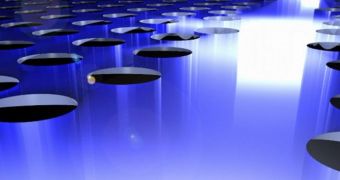In a recent study, experts have demonstrated that accepting chaos could result in a quantum computer being constructed sooner than anyone would have expected. The group that made the findings says that disorder can be controlled, and used to enhance the manner in which light and matter couple with each other in quantum systems. This could allow for the brain of these super-fast, highly-efficient machines, to finally be constructed. Experts could then proceed to mimic the real world, and conduct simulations that are way too complex for even the most advanced supercomputers of today, Wired reports.
In the investigation, which appears in the March 12 issue of the renowned journal Science, the team writes that the long-held idea that nanoscale structures should be designed in neatly-ordered fashion in order to trap light may be exceeded. According to the paper, designing a crystalline structure with a near-perfect internal structure – capable of trapping photons and using their quantum states – is an impossible task. As such, the new approach may work better and may lead to faster results, at lower costs. The work was conducted by investigators at the Technical University of Denmark in Lyngby.
What they did was basically show that a material arranged in a chaotic, random order, is just as capable of trapping and using photons – the basic particles that make up light – as a neatly-arranged one. “We took a very interesting, different approach: relaxing all these ordered structures and using disorder. Let it play with you instead of playing against you,” says TU scientist Peter Lodahl, who was also a coauthor of the investigation. The group did not construct a light trap, but a waveguide. This is a structure that forces light to take a particular route, rather than allowing it to spread as it otherwise would have.
This was achieved as the team drilled very carefully-spaced holes in a gallium arsenide substrate. Crystals are known for their ability to bend light much more efficiently than air does, and to send it through a specific channel, if scientists so please. While conducting such investigation, the TU team realized that the light was not moving flawlessly through their structures. “At first we were scratching our heads. Then we realized it was related to imperfections in our structures,” says Lodahl. Based on this finding, the team concluded that imperfections too could be used to make matter and light interact, which is the basic foundation of quantum computers.

 14 DAY TRIAL //
14 DAY TRIAL //